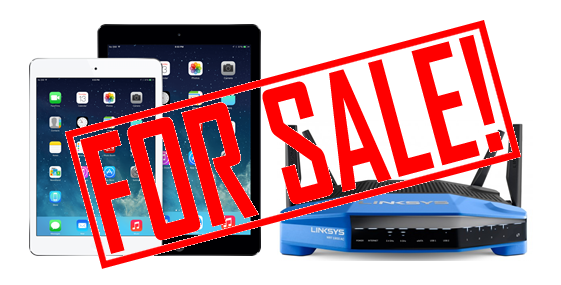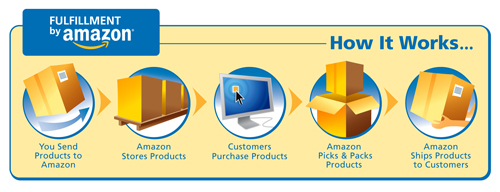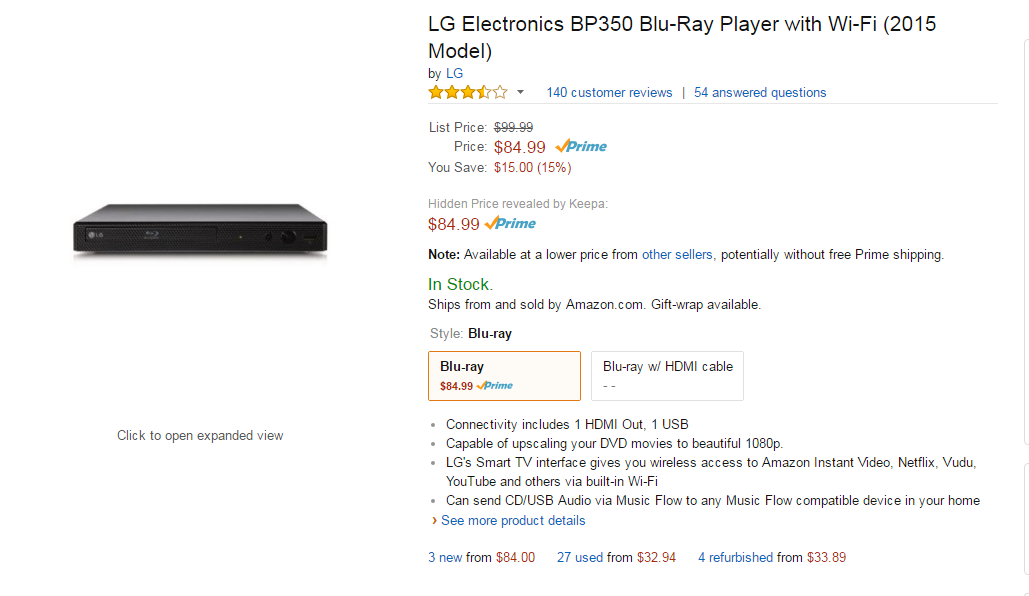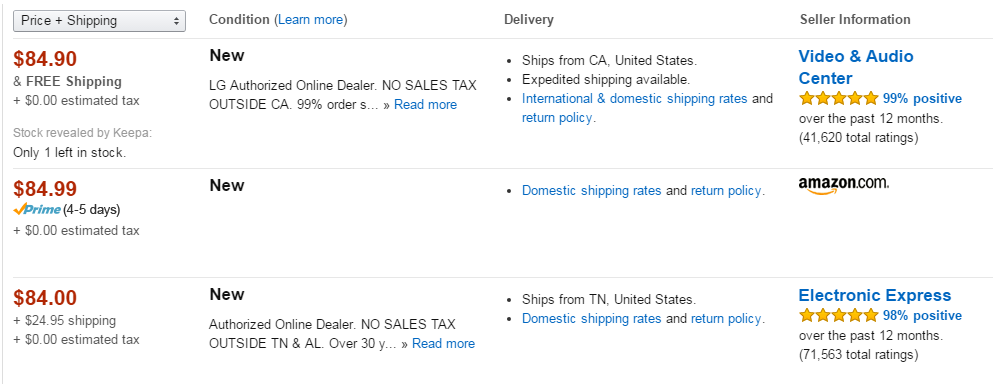Today’s guest post is from Jeff Storch who is a miles & points enthusiast turned Amazon reseller. He helps to run the very popular Sourcing Simplifiers Facebook group and the corresponding blog. He will be talking about tips and tools for successfully sourcing products and selling them on Amazon.
Introduction
Thank you Shawn for allowing me to make this guest post. I’m a travel hacker, turned reseller and I help run the Sourcing Simplifiers FBA Facebook group and the supporting blog, www.sourcingsimplifiers.com. Like most of you, I’m a points and mileage enthusiast. I used to travel the US and sometimes the world with my day job that allowed me to rack up plenty of points, miles, and statuses to do all my personal travel for free. Then I took a job with a little less business travel and needed to find ways to still travel the world for free. That is when I really got into reading blogs like Miles to Memories to help me learn best ways to earn me lots of miles and points.
One thing that is all over the travel blogs is the idea of manufactured spend to earn miles and points. I personally never got hard core into MS. I found I could get plenty of miles and points via credit card sign-ups and would just look to do MS to help reach minimum spend bonuses. I saw some of the blogs talking about reselling stuff on Amazon at a breakeven point as a method for MS. This always seemed like way too much work and risk for me. Plus I never had trouble getting enough free trips just churning a few credit cards so I just ignored it.
Reselling via the Discover Sears Triple Dip
Then the Discover IT and Sears “triple dip” occurred. For those not familiar with this, Discover card would double all cash back earned in the first year including cash back earned on portals. Sears was on the Discover category bonus Q3 and Q4 earning 5% and then 10% for using Discovers Deal portal for much of the same time. That alone would be worth 30%, but you could actually go to Sears.com and buy Gift Cards and earn the 30%, then use the gift cards to pay going through Discover Deals again to get another 10% (doubling to 20%). Lastly, Sears has lots of deals in which you can earn ShopYourWay (SYW) Rewards points, many times 100% back bonuses.
So you could get 30% back for buying gift cards, another 20% back when buying one of their 100% reward items and then another 20% back when utilizing your SYW points to buy what you wanted in the first place. In all you could end up with 70% cash back from Discover, the items you bought 100% back in points and then the stuff you really wanted. Needlessly to say, the opportunities for reselling stuff for PROFIT was endless and thus I entered the world of reselling.
Intro to Amazon FBA
So how does one resell items? Well there are many avenues, but one of the most popular is Fulfillment by Amazon (FBA) program. With FBA, you don’t have to worry about sending out an item every time it sells like you do with eBay. Instead, you gather up all the products you want to sell and send them to an Amazon warehouse and Amazon offers them up on their site with Prime Shipping. This way you get to take advantage of the greatest eCommerce platform in the world and its amazing shipping service. Once at Amazon warehouse, you just price to sell and Amazon does everything else including all customer service. Of course Amazon takes a pretty penny for these services (many times over 30%), but it’s tough to beat the convenience and sales potential when selling FBA.
Intro to Arbitrage: Online vs. Retail
With reselling you are looking for arbitrage opportunities which are instances in which the price at one store is significantly less then what it is selling on Amazon. There are multiple ways to do it, one way is Retail Arbitrage (RA). With RA, you get an app (Amazon’s seller app is free) that you use to scan items with your phone (or you can buy a Bluetooth scanner) at stores such as Walmart. The app will tell you the price the item is selling for on Amazon, the best sellers rank (we will get into that later) and has a place for you to enter the price that enables you to calculate the profit.
Related: Hardcore Retail Arbitrage: Smaller Spend But Bigger Profits
My preferred method of finding arbitrage opportunities, is Online Arbitrage (OA), which is looking online for items that can be sold on Amazon for a profit. With OA I’m typically looking to stack coupons, gift card savings, cash back portals, credit card cash back/points and/or store rewards points to lower my buy cost to increase my profit and return on invest (ROI). The Sears triple dip is an extreme example that made it easy to make money on almost any item at Sears. That opportunity like so many others have dried up. However, the good news is there are always other opportunities out there.
Demystifying Sales Rank
So you understand the basics of finding something, how do you know it will sell on Amazon? Just because it’s a great deal doesn’t mean its worth sending into Amazon as it might never sell. There is no sure fire way to know exactly how many sales a specific item has historically, but there are many ways to help you estimate the number of sales an item has.
First off Amazon assigns a best seller rank to items based on its sales velocity. The rank is category specific so you want to learn what ranks sell well in each category. For example a rank of 50,000 in home and kitchen is a great rank, but that same rank in Baby or Video games is terrible. I suggest if you are going to get into FBA to learn the rankings of the categories so you can quickly make decisions.
There are some tools that can help you. First off, we have a BSR chart that lists the top 1% and top 5% of categories. Generally you want to stay in the top 1% for items as those items will sell quicker. Once outside of the top 1% items will still sell, but might take a little more time depending how far outside of top 1%. We update the chart monthly and you can download a copy to your phone if you like or just check back the site.
Additionally, there are other tools like Jungle Scout Sales Estimator that will estimate the number of sales an item has per month based on sales rank. These are just rough estimates and shouldn’t be considered fact and many cases will be off by a lot. However, they are good tools to get a general idea of the sales velocity of an item based on its BSR rank. One thing to keep in mind is the estimated sales velocity is how many times the item itself sells. If item sells 50/month but there are 50 sellers then you’ll like be selling 0 to 5 per month, not 50. Sales Rank is just one of the factors that you should consider when trying to make a decision
Getting the Buy Box
Pricing is one of the most misunderstood facts with selling on Amazon. You do NOT need to be the lowest price to sell your item. I repeat, you do NOT need to be the lowest price. You certainly don’t need to keep lowering your price a penny every time someone matches your price as you are driving the price down for you and everyone else and cutting into your profits.
I took a quick screen shot of an item on Amazon to better explain how the Buy Box works. As a customer when you view an item they are going to show you one seller’s price (in image below its Amazon at $84.99) and then there is a small note below that which notes 3 New from $84.00.
When you click on the 3 new, it will take you to a screen showing you the other sellers. In this case you can see that even though Amazon is not at the lowest price, their price is the one displayed to the customer. The seller that is displayed to the customer is considered to have the Buy Box. In 2015, 82% of Amazon total sales went to the seller that owned the Buy Box. Clearly its key to get the box box.
Amazon rotates the Buy Box between many sellers that are priced in the same range. No one knows Amazon’s exact formula but I have consistently gotten the Buy Box when I’m priced over 10% higher than the lowest price when the lowest price guy is selling Merchant Fulfilled (MF) instead of FBA. Merchant fulfilled sellers do NOT ship their inventory to Amazon warehouses but instead keep everything at their house and ship directly to the customer when purchased.
Therefore, MFers (as I like to refer to them) can’t offer prime shipping and Amazon likes to highlight their sellers that can provide the Prime shipping. Additionally, I’ve see cases in which I can consistently get the Buy Box when 5% above the lowest FBA price. In most cases, I’ll match the lowest FBA price as long as it is at my goal price. However, if that guy lowers his price a penny I’m not going to concern myself with him and potential cause a race to the bottom as I know I’ll still get my share of the Buy Box even with a price a little higher.
Tools to Help you Succeed
So now you have the basics, but one big question remains. How do you find stuff to sell? Well for those that do RA, its just a matter of going to a store and scanning stuff. The more you scan the more things you find. Then once you find an item at say a Walmart, the next Walmart you go to you know to look for the same item. Or maybe you can find it at another source or even online.
If doing OA, there are lot’s of tools that can make the process easier for you in both finding potential items and evaluating whether they are worth selling. There are tools like OAX ray that can scan a whole online page with a click of a button and highlight items with your desired sales rank, profit and ROI. Tactical Arbitrage will scan whole online store categories and spit out results for you. There are tools that bring the rank up quickly on Amazon (Scanalyze) or tools that will allow you to quickly calculate the profitability of items while also given rank and % rank (RevSeller). There are tools that allow you to quickly analyze pricing for items with variations like shoes (also Revseller) or tools that allow you to quickly see the price and sales rank history of items (Keepa).
Many of these tools are free and many have a cost to them. In short, there are a lot of tools that can make your life easier when trying to find stuff. Many of the tools are completely free and others that cost money (from $99/year to $99/month). If you are going to try to dabble in reselling, especially OA, you will want to check these out. We have a lot of free demos on our videos section and more details on our Seller’s resource section. Additionally, we are doing a free Webinar on Online Arbitrage Tools tomorrow, July 19th. If interested, you can find out more here.
Conclusion
I’m not going to lie reselling is a lot of work, it’s not easy. I’d never try to break even or sell at a small lost just to earn miles and points. There are way too ways to make a good profit AND earn miles and points. If mastered it can be a nice little side income stream that can lead to something larger. For me it has allowed my wife to quit her job and stay home and raise our sons. Hopefully, someday I’ll be able to join her as well.








Thanks for the ultimate tips and tools regarding Amazon FBA.
[…] Amazon Reselling Demystified: Lessons, Tips & Tools to Succeed! […]
Wow!! That is a pretty neat strategy! This is completely new stuff to me.
I’ve been involved with Amazon FBA on the private label side. Private Label means to create/source products yourself and stick your own brand on it. While making the original product better with modifications from the reviews online.
If I had known about this strategy a while back, I’m sure I would have given it a try. At this point i’m using a few tools for private label research: Amasuite (http://www.getamasuite.com) and CamelCamelCamel (http://camelcamelcamel.com). The first helps to find products and the latter helps to see the history of sales. I’ve even used the Jungle Scout sales estimator but not as often. Once you have a product up and running, Amazon pretty much guides you into what you should be selling next by telling you what others have purchased along with your products. Therefore increasing your average order size.
Thanks again to both of you for this wicked post!
[…] If you wanted to learn about reselling with Amazon. […]
There actually is Merchant Fulfilled Prime called Seller Fulfilled Prime.
Who do you use for general liability insurance, or do you sell less than 40 items per month so a professional selling plan is not needed?
Thanks!
I’m not clear on how the Sears’ Triple Dip dried up.
You know what it might actually still be live. Discover deals was taking months to post last fall and they updated their terms to prohibit it so I stopped going that route and instead just went the route of using discounted GCs and other CB portals. The bonuses through DD can be outstanding but their tracking is by far the worst.
It is certainly alive on some level, but just not as good as it was left year.